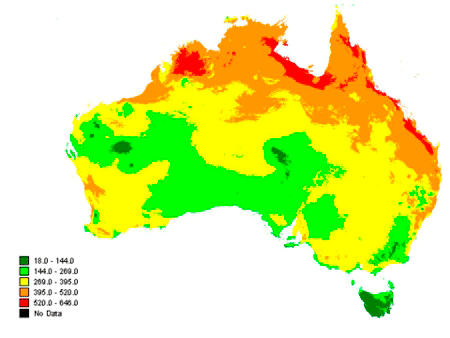
|
Published: 12 September 2011
Plant data helps map potential ‘bio-cultural diversity’ hotspots
Potential ‘hotspots’ across Australia for finding plants used in Aboriginal traditional medicine have been identified by Macquarie University, using data from the Australian Virtual Herbarium (AVH) and the Global Biodiversity Information Facility (GBIF).
The Global Biodiversity Information Facility (GBIF) is an international, government-funded initiative focused on making biodiversity data freely available for scientific research and sustainable development. The Atlas of Living Australia (ALA) hosts the GBIF national node in Australia.
The modelling study showcases biodiversity informatics research at Macquarie University, led by Professor Shoba Ranganathan. Researchers used data accessed through the GBIF portal and Australia’s Virtual Herbarium (AVH) along with the latest modelling technology to identify suitable ecological niches for 414 plant species of medicinal importance, available from the Customary Medicinal Knowledgebase (CMKb).
The research, with Dr Jitendra Gaikwad as the first author, was recently published in the journal Ecological Modelling. The main outcome was a map of potential ‘bio-cultural diversity’ hotspots – areas suitable for the occurrence of multiple species known to be used in traditional medicine.
‘Many plants brought into Australia by early settlers have become an integral part of Aboriginal traditional knowledge. Global data on these plants is essential, and we obtained this from the GBIF,’ said Dr Gaikwad.
‘For Aboriginal people, their connection with the land is a matter of survival, emotion and culture – it is not just a piece of land for them.
‘So let’s say a mining industry identifies an area that is inhabited by an Aboriginal community. This methodology allows us to evaluate the cultural value of the land.
‘We have used medicinal value, but we can use other socio-economic, traditional knowledge and biodiversity conservation aspects as well.
‘The next logical step would be to select an area and validate the distribution of the species and the cultural value in the field. But before that, we need to have active participation of Aboriginal communities to validate the results.’
CMKb, based at Macquarie University, is teaming up with the ALA to integrate medicinal knowledge with other information on Australian biodiversity.
According to the Director of ALA, Donald Hobern, study represents ‘an exciting and novel use of multiple heterogeneous datasets to explore the linkages between phylogeny – the study of the evolutionary relatedness of life forms – ecology, chemistry and human use of biodiversity’.
Source: ALA/GBIF




